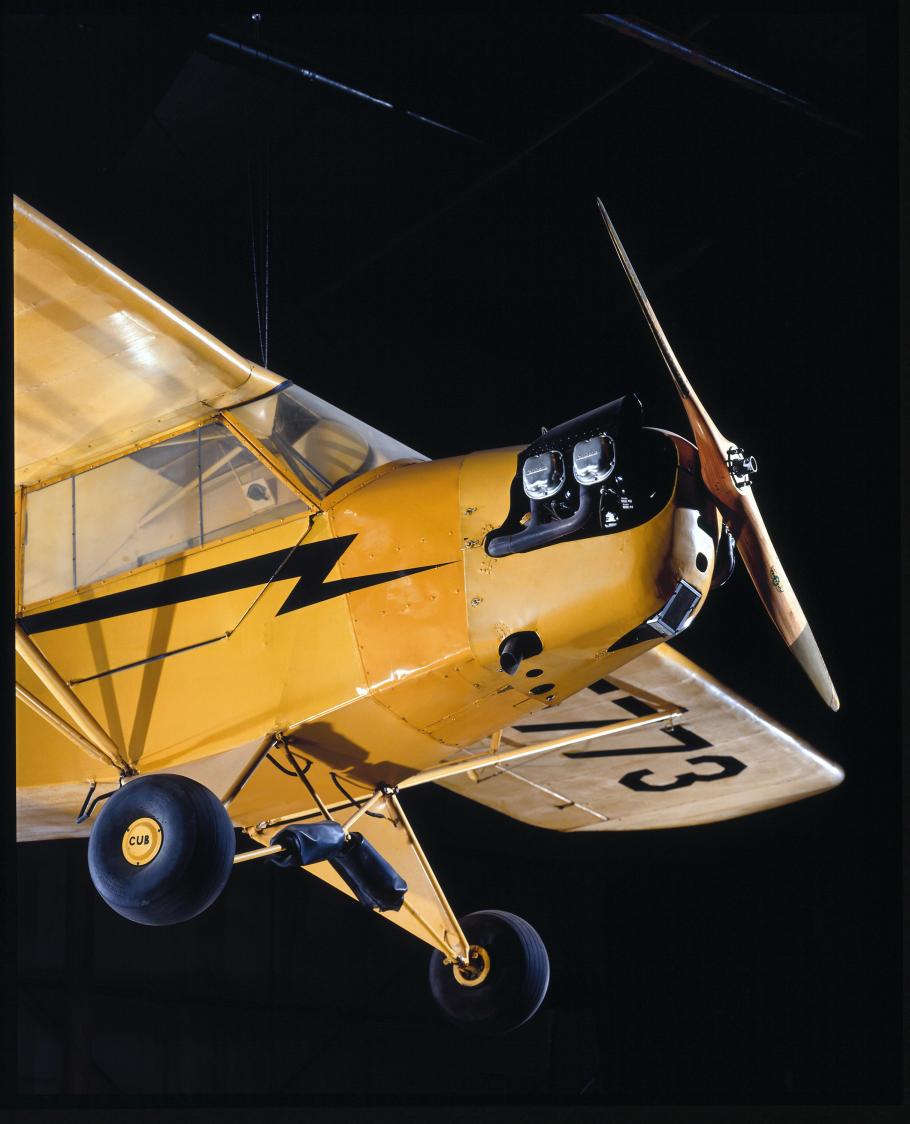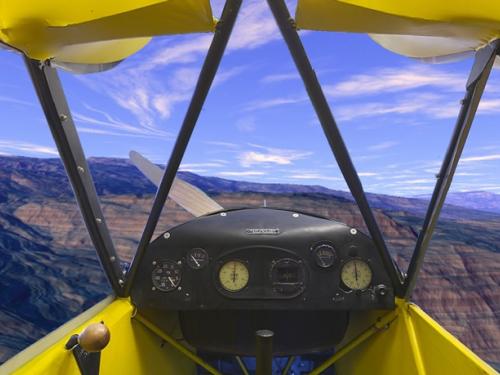First built in 1937, the Piper J-3 earned fame as a trainer and sport plane. Its success made the name "Cub" a generic term for light airplanes. The little yellow tail dragger remains one of the most recognized designs in aviation. J-3 Cubs and subsequent models are still found at fields around the world. Thousands of pilots, including three-fourths of those in the Civilian Pilot Training Program, trained in Cubs.
William T. Piper and Piper Aircraft are one of general aviation's greatest success stories. Piper took Gilbert Taylor's Tiger Kitten and E-2 designs and, with Walter Jamoneau, built the Taylor and Piper J-2, then the legendary Piper J-3. When production ended in 1947, 19,888 Piper Cubs had been built. This Cub was built in 1941 and accumulated more than 6,000 hours of flying time before being restored in 1975.
Display Status
This object is on display in Aerobatic Flight at the Steven F. Udvar-Hazy Center in Chantilly, VA.
Panoramas
Object Details
Date
1937-1947
Country of Origin
United States of America
Type
CRAFT-Aircraft
Manufacturer
Piper Aircraft Corp.
Physical Description
N35773; distinctive yellow, high-wing light monoplane with tailwheel; trainer and sport aviation; Continental A-65, 65 hp engine.
Dimensions
Wingspan: 10.7 m (35 ft 3 in)
Length: 6.8 m (22 ft 5 in)
Height: 2 m (6 ft 8 in)
Weight, empty: 309 kg (680 lb)
Weight, gross: 554 kg (1,220 lb)
Top speed: 129 km/h (80 mph)
Engine: Continental A-65, 65 hp
Materials
Fuselage: steel tube with fabric cover
Inventory Number
A19771128000
Credit Line
Gift of Roland M. Howard
Data Source
National Air and Space Museum
Restrictions & Rights
Open Access (CCO)
For more information, visit the Smithsonian’s Terms of Use.
















